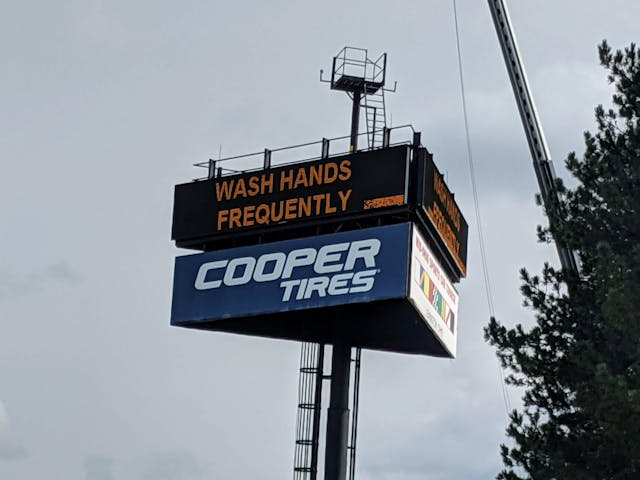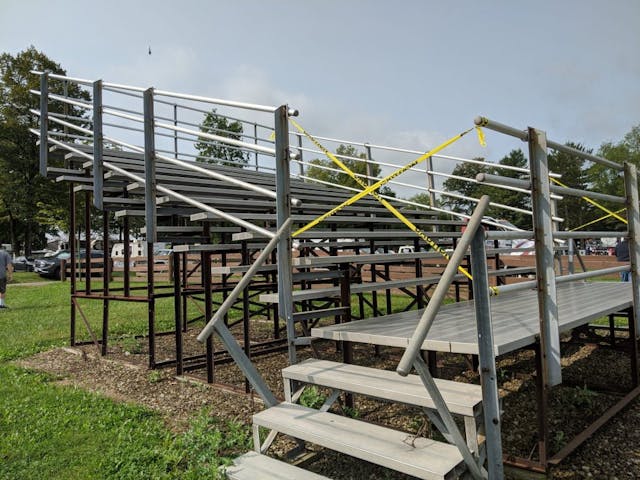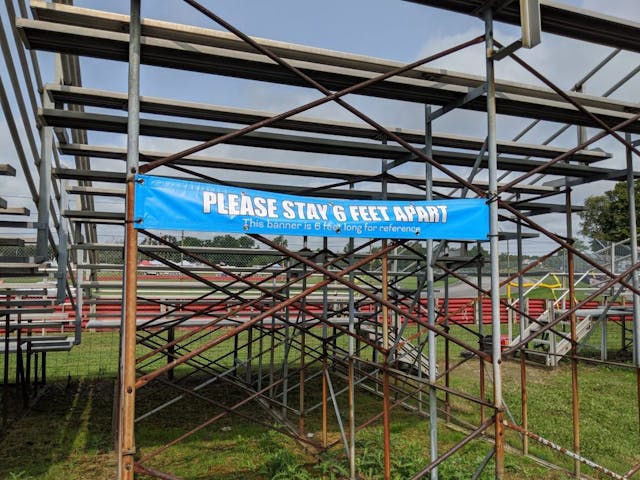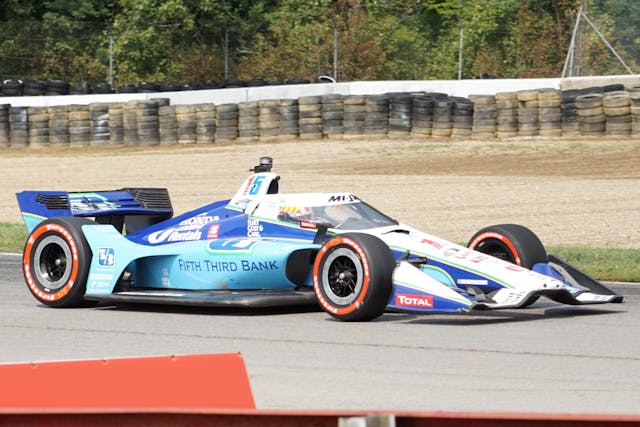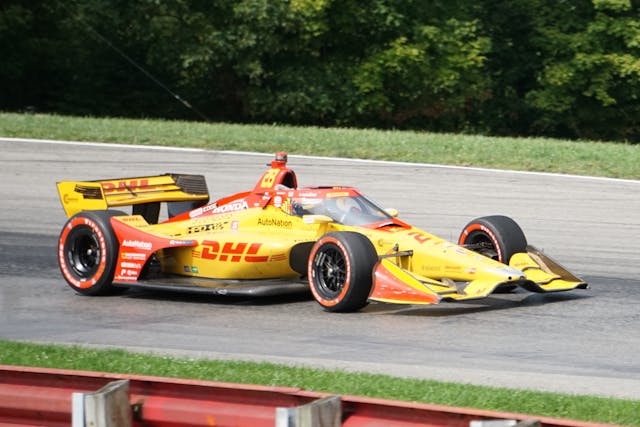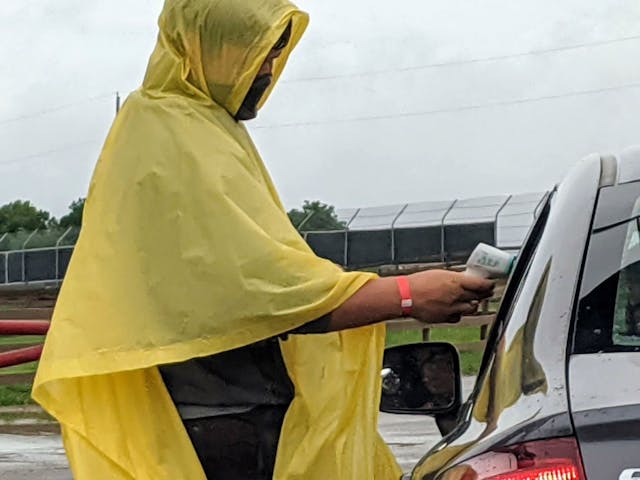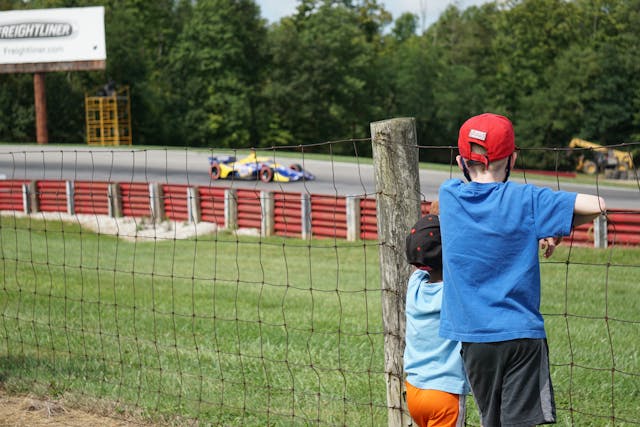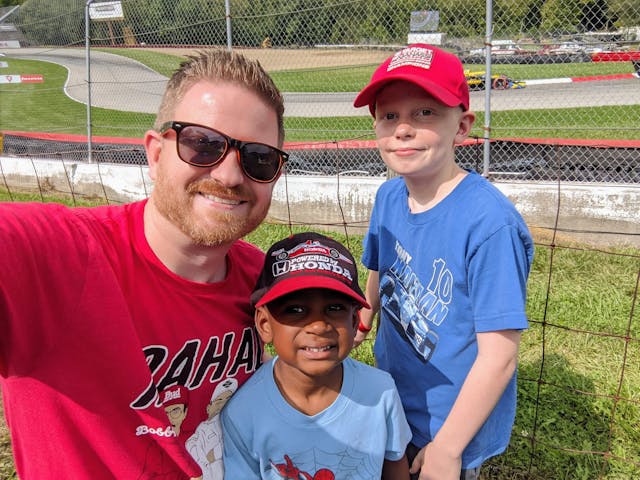Media | Articles
We ask the tracks, teams, and Mario how IndyCar put on a doubleheader… with five days’ notice
The announcement came Saturday afternoon, September 5th. The previously postponed NTT IndyCar Series race at the Mid-Ohio Sports Car Course had been rescheduled… and the teams would be arriving at the track in a mere 5 days! On top of that, for the first time in the 35-race history it would be a doubleheader. By Tuesday another big announcement came; a limited number of fans would be allowed.
I attended the race as a fan, then talked with a couple team engineers as well as the track president of Mid-Ohio to learn how they were able to pull off the largest sporting event in Ohio since March with only 5 days’ notice.
The Track
Mid-Ohio staff worked with local health officials over the last month in order to reschedule the Honda Indy 200. However, getting clearance only 5 days before the trailers would pull in brought many new challenges. First and foremost, the track had to work diligently with the Governor’s office to ensure the right protocols and procedures were in place to host fans.
“It was exciting to open our gates to fans again. The Honda Indy 200 at Mid-Ohio is one of Ohio’s premier annual events,” said Craig Rust, president of Mid-Ohio Sports Car Course. “We were proud to be trusted by the Governor’s office to put on the first major sporting event in Ohio with fans present since March. In order to be approved we had to demonstrate to the state how spectators would be able to social distance. It helped that our facility is spread out over 330 acres with room for camping and plenty of general admission viewing areas throughout the 2.25-mile track. We aren’t like the NFL, we don’t have an enclosed arena and knew we could make this work.” Closing some grandstands that would normally be filled with 12,000 fans helped them get approval for a special variance increasing the state’s spectator limits from 1,500 to 6,000.
Mr. Rust spoke positively about working with the Governor, Lt. Governor, and Morrow County Health Commissioner, citing their guidance and time taken to review MidOhio’s plans.
Marketplace
Buy and sell classics with confidence
Rust even threw some love Hagerty’s way, “With so much lost revenue from ticket sales, it was nice to see a new sponsor like Hagerty represented at the track and we hope to build on that relationship in the future. Now we had to get to work,” Rust explained. “We had no time to hire new employees, so everyone had to chip in. We were going to have to do this with far less people than normal.”
After reaching out to current ticket holders, they were able to offer the remaining tickets for sale on Wednesday and were sold out by Friday morning. Attending the IndyCar race at Mid-Ohio with my kids has become a summer tradition so we got our tickets right away.
Without the normal crew of summer employees, all Mid-Ohio staff had to roll up their sleeves to get the track ready. That meant installing plastic barriers at gates, hanging social distancing banners, distributing hand sanitizer bottles throughout the facility, and much more.
Rust continued, “Our sales team spent the days before the event painting lines in the grass for people to safely sit while social distancing, and the race weekend regularly cleaning bathrooms. One of our owners knew how to drive a tractor, so he spent a lot of the week mowing the grass around the property.”
“Our CFO went around the track painting boards. The track owners grabbed tools and tightened bolts on all the fencing. It took everyone chipping in to make this happen. We even brought a few people from the St. Pete race team up to help,” Rust proudly shared.
A big challenge was creating a sort of “bubble” around the paddock and separate entrance to protect the entire IndyCar community. Much like the NBA and NHL have their “bubble”, the traveling IndyCar community must also work apart from the crowd during race weekends. That means no fans anywhere near team members or drivers. Fencing and security had to be organized quickly. Because of COVID-19 restrictions, teams are limited to 20 people per car and rosters must be submitted in advance. The track had to have personnel ready to check-in, do temperature checks, protect, and organize all team members for 4 different racing series competing over the weekend.
The promoters of this event, Green Savoree Racing Promotions, have been hit particularly hard by this pandemic with all 4 of the events they run either being postponed or cancelled. The Grand Prix of St. Petersburg wasn’t cancelled until after 250 workers had spent 25 days constructing the track and cars were on track for practice. Thankfully it is now rescheduled for the end of the season. The Portland and Toronto races were cancelled altogether. Finally getting to run Mid-Ohio was a relief, but at a cost. They will still incur lost revenue from a lack of vendors, parking, merchandise, food service, golf cart rentals, catering, and more. In the past Mid-Ohio has seen 75,000 fans at the IndyCar race, compared to the 6,000 this year.
The parking lot that normally would be full of food vendors and team merchandise trailers featured only one total, for Tony Kanaan… who wasn’t racing in the event. With only 6,000 fans present, their crew reported sales were way down (despite my son buying his 5th Kanaan model car). Having two main events throughout the weekend means drivers will compete in a pair of 75-lap races instead of the usual 90-lapper. Mr. Rust explained that the extra race doesn’t affect their workload very much — however, it definitely affects the teams.
Teams
Although teams had heard rumors, there was no heads up for them that the race had been rescheduled until they saw the press release like everyone else. Getting ready in 5 days to run two races about 20 hours apart has a big impact on the team members.
The first piece of business is getting their roster of critically needed roles to the track. Depending on the track and the number of people that state lets gather, that meant some driver’s spouses and even team spotters weren’t allowed in the “bubble” to limit numbers.
Doubleheaders save money on travel, but that doesn’t mean they are easy on the team or driver. Bob Perona, spotter for IndyCar driver Jack Harvey shared, “You can’t imagine how incredibly hard doubleheaders are for mechanics and crew.” Yet he expects it to continue for the near future, largely due to reasons of cost. He says he wouldn’t change a thing because in the end, “Everyone on the team still loves being here.”
Clay Filson, an Engineering Team Member for Rahal Letterman Lanigan (RLL) Racing says, “Events like this really show off the organizational skills of an IndyCar team. You find everyone relying on each other a lot more on these doubleheader weekends.” A doubleheader means carrying more spare parts then you normally would. An accident in race 1 that would typically end your weekend and wait to be repaired back in the shop, must now have enough parts on hand to be fixed overnight. Plus, with a single practice session scheduled for the whole weekend, there isn’t room for error in setup or it could affect both of your races.
Filson added, “You don’t want your crew being pessimistic, but a good team will think of the worst-case scenarios in order to be prepared for this weekend.” Teams will prepare as many replacement parts like uprights and axles ahead of time in the shop. “The goal being to get as much work pre-done before arriving at the track. That means anything that typically is replaced on a car after a race needs to be built ahead of time in the shop and be ready to go.”
All approved team members in the paddock are provided a special IndyCar health app they must use to do a self-assessment every morning. Once completed, the app provides them a barcode that is scanned by a track employee to gain entrance. Strategy can be different for teams specifically because of the doubleheader aspect of the weekend. For example, instead of balancing tire wear for one race, the teams were provided a total of 14 sets of Firestone tires to be shared throughout the entire weekend of 1 practice, 2 qualifying sessions, and 2 races.
Filson explained that a challenge teams face with this year’s often-changing schedule is providing sponsors with the experiences and exposure they deserve. With most tracks closed to fans, and all paddocks closed to sponsor VIPs, traditional ways of entertaining sponsors are gone. “Team RLL Racing takes a lot of time trying to find creative ways to still entertain sponsors and fans alike. Everything from installing live cameras in the garage so you can see what is going on from home, to having team members do exclusive live marketing videos throughout a weekend to help virtually entertain people.”
Another way Rahal Letterman Lanigan Racing tries to showcase their many sponsors is by doing a complete sponsor change between races, as they did for Graham Rahal’s #15 Honda powered machine Saturday night. Changing the vinyl wrap on the car overnight isn’t as easy as it looks. What normally is done over 3 or 4 days must be done by a group of people in a matter of hours. Throw in the fact that you aren’t working in a climate-controlled facility, causing the vinyl to react differently when it is outdoor in cooler temperatures, and the job can last until 2 or 3 in the morning. Filson shared, “The team does everything it can to honor all sponsor commitments for the number of races and exposures they were promised, even when that is not the easy way out. Changing the sponsor overnight, also means everyone down to the spotter requires a change of uniform from United Rentals on Saturday to Fifth Third Bank on Sunday.”
The 3 to 4 team members who are skilled in attaching the vehicle’s livery must be factored into the 20 allowed per car. Who goes to the track can be a juggling act between trying to fit in 4 to 5 engineers, 2 team managers, truck drivers, mechanics, tire specialists, spotters, a crew chief, an IT manager, and of course the owners and driver. “The team didn’t feel shorthanded, but the Mid-Ohio race definitely forced everyone to be very organized,” said Filson.
The drivers also have to adapt to doubleheader weekends. The part that often goes unrecognized is the fitness of the drivers. The new aero screen has proven to be incredibly safe, but also very hot for the drivers. Physically and mentally, 2 races back-to-back is tough, especially at a challenging location like Mid-Ohio. Unlike other professional racing series, IndyCar’s don’t have AC, cool suits, power steering, or power brakes.
Graham Rahal described these doubleheaders as “grueling for the team, driver, and mechanics,” and that is coming from a fitness addict. Before the race Rahal shared, “Mid-Ohio is the most physical track we go to, so to have a doubleheader here of all places is going to be one heck of a workout.” Graham predicted he would lose as much as 12 pounds over the weekend.
Team owner Michael Andretti summed the weekend up on the broadcast after his team won the pole, the race, and sweeping the podium on Sunday, “It’s so huge, so huge. Thank God we came here to Mid-Ohio. We were a little worried that we weren’t going to be able to get here, but Kevin Savoree and those guys did a great job getting this race on, and it paid off for us, man.”
Fans
From a fan’s perspective there were a few obvious changes, like always having to wear a mask and not being able to get into the paddock like we typically do. Also, all spectators had to enter through the same gate. At entry, they would stay in their car and be subject to a temperature check and health screening to enter.
The grounds themselves were also prepared with social distancing in mind. General admission viewing areas were clearly marked and strictly maintained with painted boxes to accommodate four spectators and walkways were marked for direction. Other than that, you wouldn’t have known how unique this event was. There were no signs of unfinished work or any indication how crazy the week must have been for all the Mid-Ohio employees and teams trying to prepare on such short notice. Which is a sign of the great job everyone did.
There are still 3 races left in the 2020 NTT INDYCAR Series. This weekend’s INDYCAR Harvest GP doubleheader at the Indianapolis Motor Speedway road course, and the season finale with the Firestone Grand Prix of St. Petersburg on October 25. Fans are allowed (and tickets remain as of this writing!) for the races in Indy. If you’re lucky enough, you may run into a racing hero like we did. COVID or not, Mario Andretti approached my kids and proved to be a class act.
He showed off his Indy 500 winner’s ring and answered questions. Having seen him get the Indy 2-Seater car a little squirrelly on the rain-soaked track that morning, I asked if he was nervous driving it in those conditions. He replied by placing his hand on my shoulder and looking me directly in the eyes and saying, “No son. No. I was not nervous at all driving an IndyCar. In any condition,” and he walked away. You don’t get a memory of a lifetime for me and my boys like that without a lot of people working really hard to pull this off.
The last time I attended a sold-out IndyCar race was the 100th running of the Indy 500. This “sellout” was, um, a little different. With a limited crowd on hand I was able to play football with my boys alongside the track while cars went by in the background which was fantastic.
If you’ve never checked out the Mid-Ohio Sports Car Course, you should. I say it’s one of the best family values in all of live sports with children 12 and under always free.
On the way home my 11-year-old looked at me and said, “This was the first thing that felt normal all summer.” Well done Mid-Ohio and IndyCar, you provided people who needed entertainment and a sense of normal during 2020 exactly what we needed.

